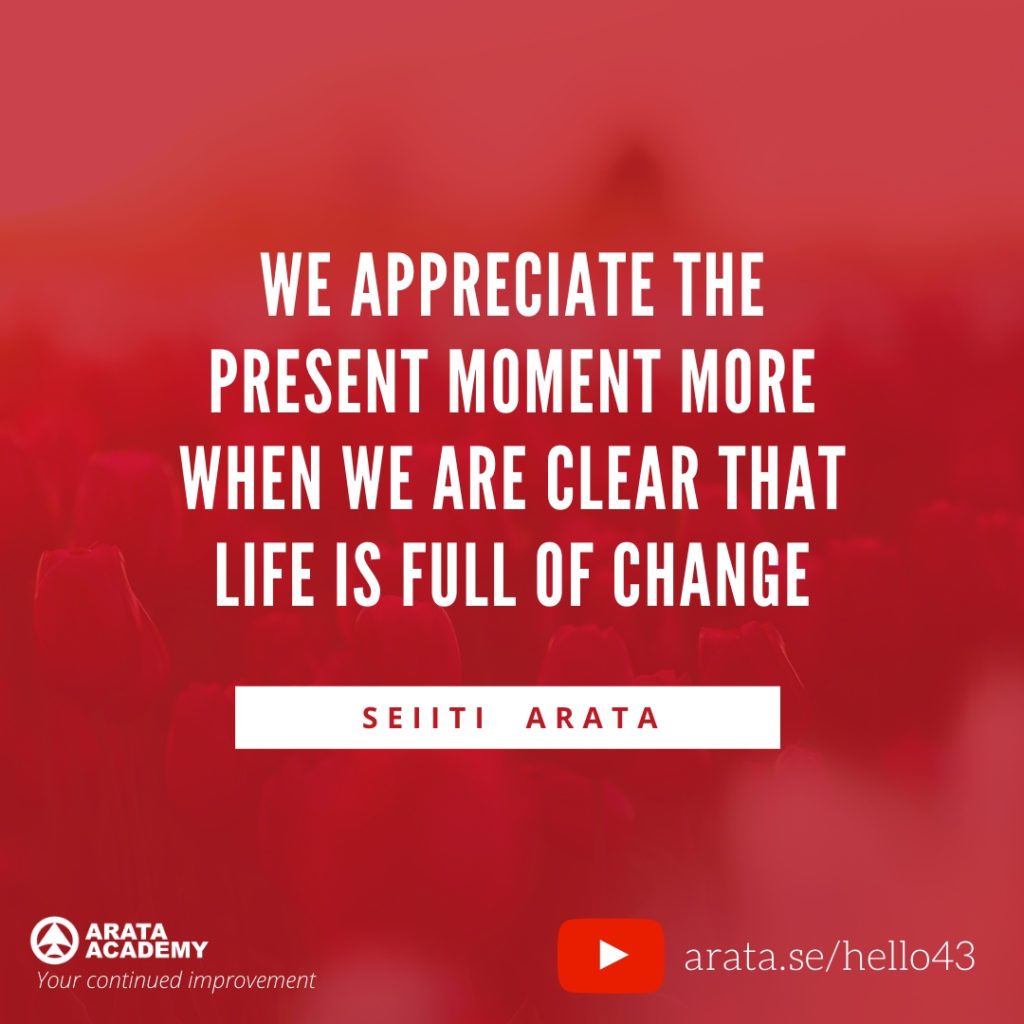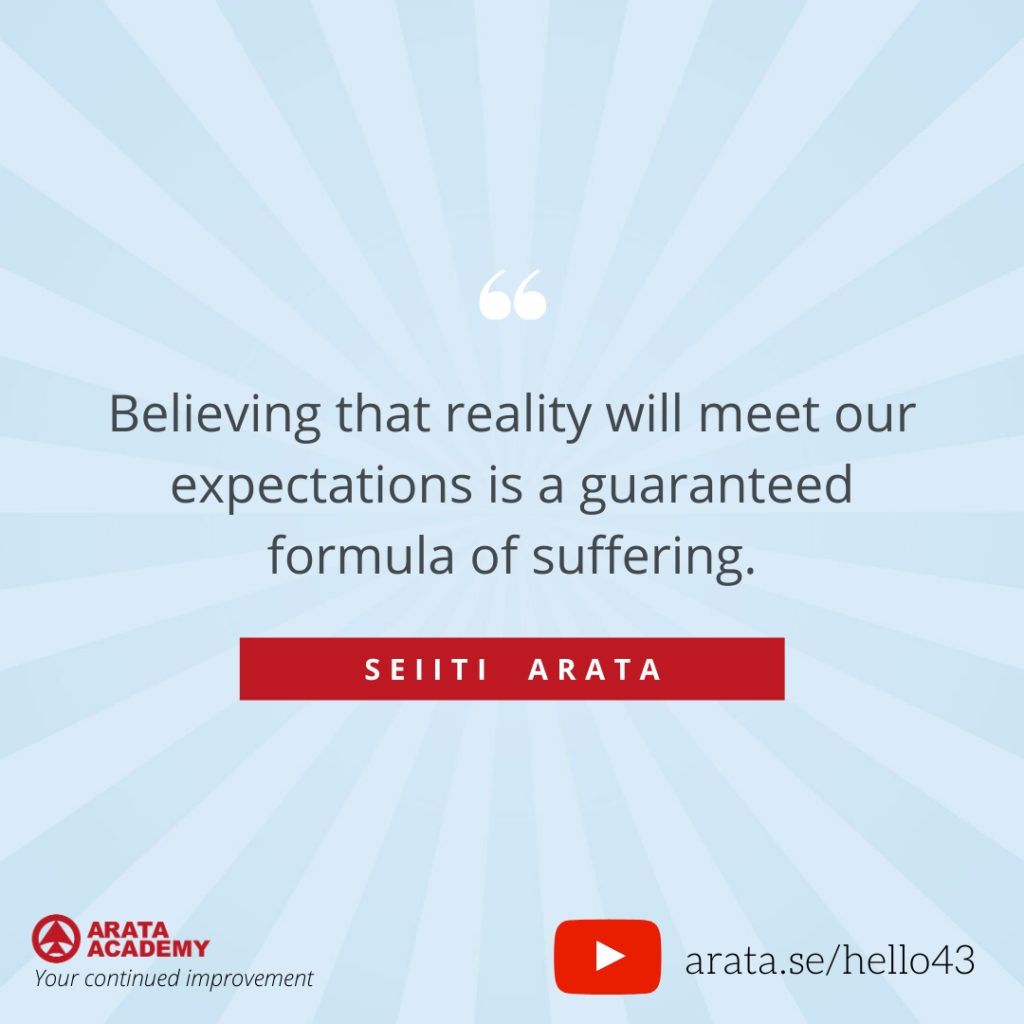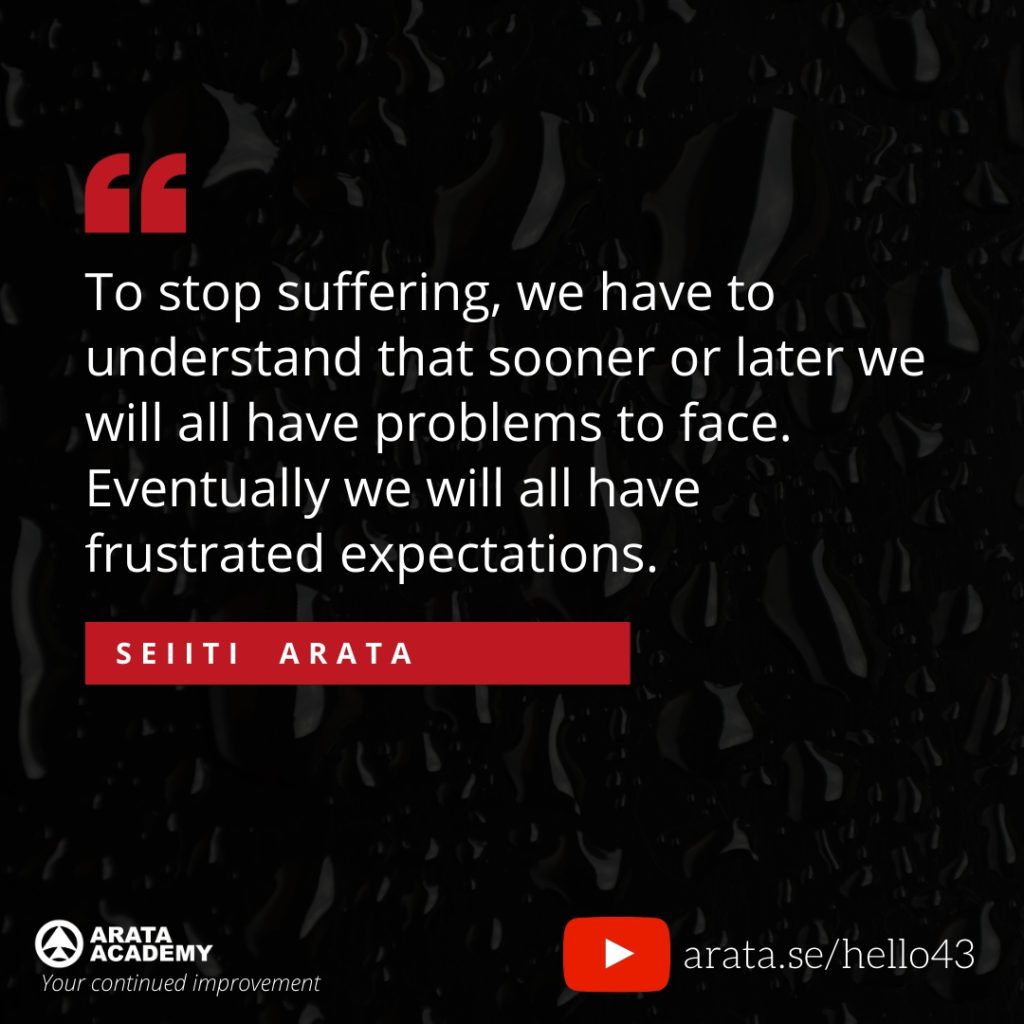Hello! Seiiti Arata. In today’s episode, I’m going to give you a walkthrough to help you stop suffering in an elegant and simple process that will take less than five minutes. It is relevant to any kind of suffering, job loss, health problems, the end of a relationship, or a loved one’s death… Well, to any life situation.
1. First, let’s understand where the suffering comes from.
Suffering emerges when there is a disconnection between expectation and reality.
When some things fly out of control, when they change or don’t materialize, we suffer.
There was an expectation. More than that: there was this belief that the RIGHT thing would have been to have reality addressing our expectations. And when that doesn’t happen, suffering comes, the suffering that tells us that everything went WRONG.
Feeding our belief that reality is going to correspond to our expectations is a guaranteed formula for suffering because the truth is that life is not totally under our control. The world doesn’t spin around us. The people or the things that bring us happiness are not permanent or immutable.

2. We mature when we adjust our expectations to reality
Children do cry a lot because they’re immature and they still don’t know how to cope with situations differently from their expectations. They struggle to accept that they are no longer the center of all attention as it used to be when they were little babies.
Teenagers suffer when they get dumped. They believed that their love was forever. It was not.
Adults fall into despair when they’re out of that job which seemed so stable. It was not. Or when they find themselves carrying a chronic disease. Or when a loved one ends up passing away.
In all those situations, there is a disconnection between the expectation and reality.
The maturing process helps us to adjust and to reconcile expectation with reality.
In the adult life, we already know that when we are given a rose, that rose will have its end. Thus, we don’t suffer that much when its petals start to wither. We’re mature and we know that is the flower’s nature: one day it’s a rosebud, the other it blossoms and, lastly, it withers. We don’t have the false expectation of watching it live forever.
3. To stop suffering, we need clarity
On the withering flower’s example, we don’t suffer. We have clarity. And that clarity is going to help us.
When we gain the consciousness that life is full of change and unpredictable events, we appreciate the present moment more. We understand that we can make conscious choices now. And that now is the moment where we can be kind enough to those we love. To tell them how much we love them. Being present. To leave the smartphone aside.
That clarity is what precisely dispels the illusion of considering good things to be permanent, that bad things will never come, that problems will never knock on our door.
We accept any scenario without suffering.
4. Do not confuse acceptance with resignation
When we talk about acceptance that is not resignation, nor submission.
What is acceptance? Acceptance is not offering resistance to what already is.

Imagine that I have an important appointment, but I get a strong cold, a fever which makes me stay in bed. That cold brings me pain. And if I offer resistance to it, I get infuriated, wrathful, thinking about how such an important day is now affected. I’m creating a second layer of pain. That is the suffering: it is the disconnection between expectation and reality.
5. How to stop suffering
To stop suffering, we have to come to terms that, sooner or later, all of us will have to face problems. We will have our expectations frustrated.
Most people cannot accept those situations. They are taken by a strong emotion of denial. They think “this can’t be happening to me!”. Denial is a negative state of low intensity, an escape, a defense.
And what is the outcome? Nothing changes. The reality remains the same. When we get that denial is not working in order to change reality, we move on to anger. Anger is a negative state of high intensity, it is an attack. We curse, we yell, we rage ourselves.
And what is the outcome? Nothing changes. The reality remains the same. When we get that anger is not working in order to change reality, we move on to hope. We smile. We are hoping for luck to change.

And what is the outcome? Nothing changes. The reality remains the same. When we get that hope is not working in order to change reality, our ground shatters. We fall into depression. We get disappointed, we end up being sad. Life loses its meaning. We fight reality and that brings an enormous sadness because we had never thought of that scenario being real before.
And what is the outcome? Nothing changes. The reality remains the same. This is where suffering ends: when we accept. We stop offering resistance against reality.
To stop suffering immediately, be aware of this process. You’ve been through this already. I’ve been through it. And we know that if we had chosen acceptance right at the processes very beginning, we could have avoided a lot of suffering.
To stop suffering, let’s accept what already is and what cannot be changed.
That acceptance, I repeat, is not to be confused with resignation, with submission, with conformism, or with lowering your head when facing the kind of obstacles that can and must be overcome.
This is where self-knowledge and wisdom have a role, in order to know how to distinguish what can be changed and what cannot. Understanding what’s in the past. Understanding what can be built in the future.
That clarity is what allow us to resume the present moment with clarity and doing what can be done.
Don’t lose your time in the past – that has already happened. Don’t keep reliving moments of frustration, of pain. It has happened. Ask yourself: what can you do NOW? And do what can be done. Focus on the present moment. If you need help, visit the link https://arata.se/focuscourse to give you the first steps.

